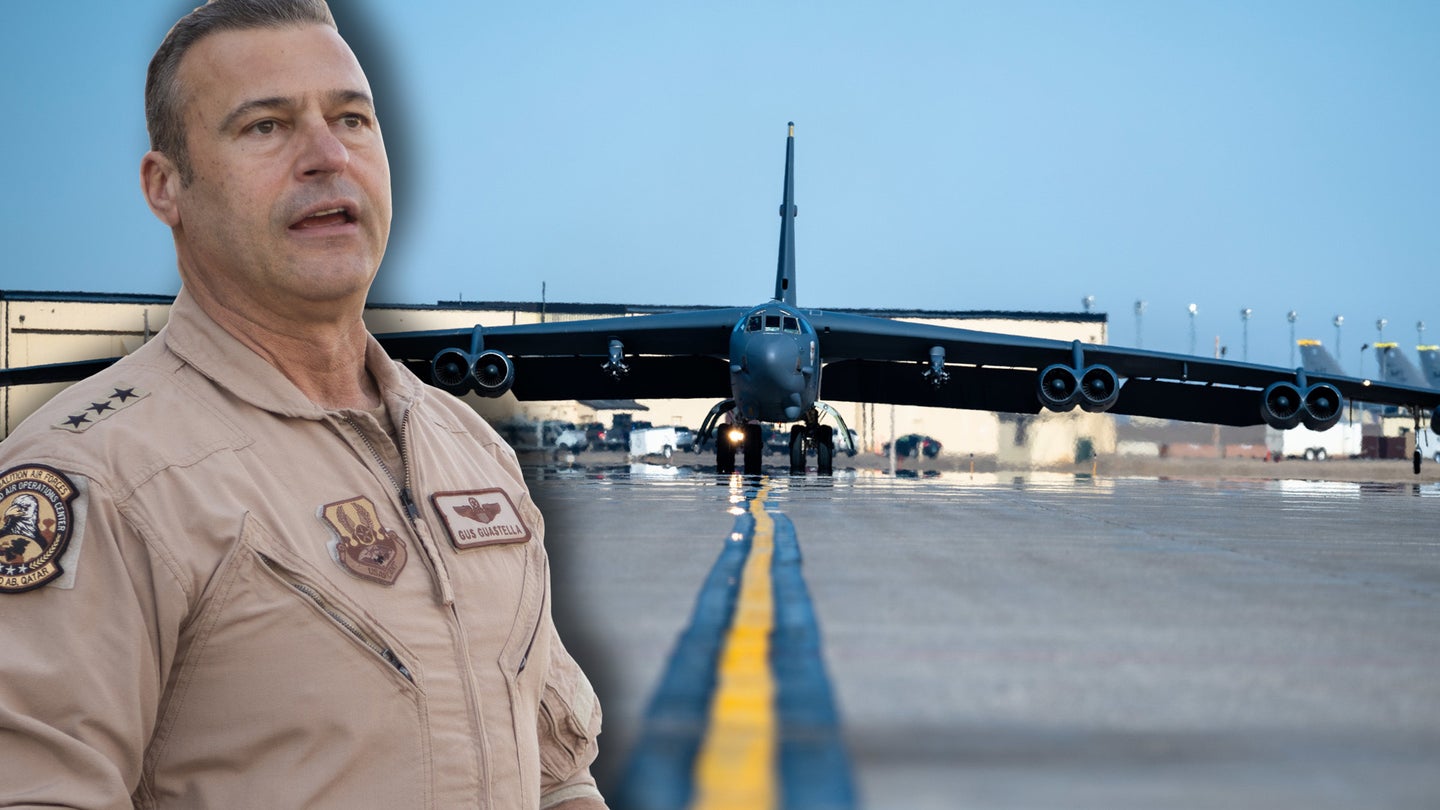An Air Force general wants to ‘robust’ Guam. What the hell does that mean?
Robustin' makes me feel so good.

The U.S. military tends to contort the English language the same way it disfigured Eugene Stoner’s design for the AR-15 to create the highly flawed M16.
The word “behoove,” for example, seems only to exist so that noncommissioned officers can chew out junior enlisted servicemembers for their various failings. Likewise, nary has a Supreme Court ruling been written in which one of the justices has “piggybacked” off another’s opinion. And no one has ever asked his or her date if they want to come inside to spend the “period of darkness.”
Now an Air Force general officer has shown the military has found a new and creative way to warp the word “robust,” which in the civilian world is most often used as an adjective to describe something or someone as “strong” or “capable.”
Subscribe to Task & Purpose Today. Get the latest in military news, entertainment, and gear in your inbox daily.
Air Force Lt. Gen. Joseph Guastella recently told lawmakers the service wants to “robust” military installations on Guam, though he did not provide any specific information about the Air Force’s plan for the island.
Guastella was testifying on Tuesday about Air Force modernization when Sen. Josh Hawley (R-Mo.) asked him how the Air Force Force’s budget request would support military installations on Guam.

“Obviously, Guam and the cluster there is a critical capability for us,” Guastella replied. “It’s also a main operating area that we will always want to robust and ensure it’s viable in various threat levels. In addition to that, we need other operating locations — and that’s something I talked about with agile combat employment. It’s a combination of robusting the Guam cluster as well as investments in locations across some of the Pacific area.”
While Guastella managed to pull off a feat of grammatical gymnastics, his answer shows that all military jargon inherently hides more information than it provides.
It’s possible that Guastella did not want to publicly discuss the specifics of the Air Force’s specific plans for Guam. When Hawley asked if Guastella would feel more comfortable briefing lawmakers about Guam “in a different environment,” Guastella agreed.
After this story was first published, Air Force spokeswoman Rose Riley provided a statement that explained the context of Guastella’s comments.
“To put the term ‘robusting’ in context, a better word choice would have been ‘strengthening,'” Riley told Task & Purpose. “Lt Gen Guastella was referring to the Pacific Deterrence Initiative which requires investing in infrastructure of the physical defense and active defense systems for air bases such as Guam and other locations that are in the range of adversarial threats.”
Why the Air Force is planning for a more robust presence in Guam has to do with China’s growing power in the Pacific region. The Chinese military has ballistic missiles that can carry out precision conventional strikes and nuclear attacks against Guam, which hosts Andersen Air Force Base, according to the Defense Department’s latest report on Chinese military power.
That means a war against China could mark the first time American territories in the Pacific have been attacked since World War II, when the Japanese struck Pearl Harbor, invaded the Aleutian Islands, and captured Guam as well as Wake Island. The Japanese also launched thousands of balloon bombs against the continental United States, one of which killed a woman and five children in Oregon.
The Defense Department’s Missile Defense Agency has asked Congress for $539 million in next year’s budget to develop radars and weapons systems that could protect Guam from Chinese cruise and ballistic missiles as well as hypersonic weapons, Defense News reported.

“Current forces are capable of defending Guam against today’s North Korean ballistic missile threats,” Missile Defense Agency Comptroller Dee Dee Martinez told reporters in March. “However, the regional threat to Guam, including from China, continues to rapidly evolve.”
The U.S. has also planned for years to move about 5,000 Marines from Okinawa to Guam, prompting Rep. Hank Johnson (D-Ga.) to express concern in 2010 that the island might capsize if too many U.S. troops were sent there – for which he has been widely ridiculed.
Much of the military’s future footprint on Guam will be determined by future budgets and contractual agreements. Navy Adm. John Aquilino, head of U.S. Indo-Pacific Command, told lawmakers on Tuesday that the military needs to complete a military construction plan for Guam.
“Guam’s strategic importance is difficult to overstate,” Aquilino wrote in a statement to the House Appropriations Committee-Defense. “The Department has committed more than $11 billion for military construction projects on Guam in FY22-FY27 to meet our commitment with Japan under the Defense Policy Review Initiative (DPRI), highlighting the importance of the island for sustaining the joint force as our main operating base and home to 130,000 Americans.”
UPDATE: This story was updated on May 23 with a statement from Air Force spokeswoman Rose Riley.
The latest on Task & Purpose
- Russian troops are proving that cell phones in war zones are a very bad idea
- Air Force disciplines C-130 crew for ‘unplanned’ landing to pick up motorcycle in Martha’s Vineyard
- Commandant walks back possibility of Marines skipping boot camp
- Air Force pilots explain why the F-22 Raptor is a ‘beast’ in aerial combat
- Sailors from my old ship are dying by suicide. I may know why
Want to write for Task & Purpose? Click here. Or check out the latest stories on our homepage.
